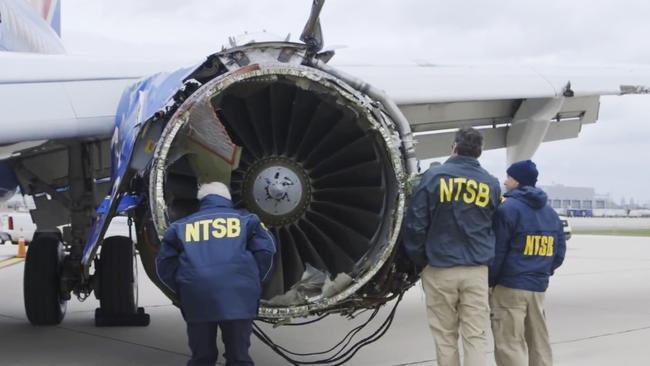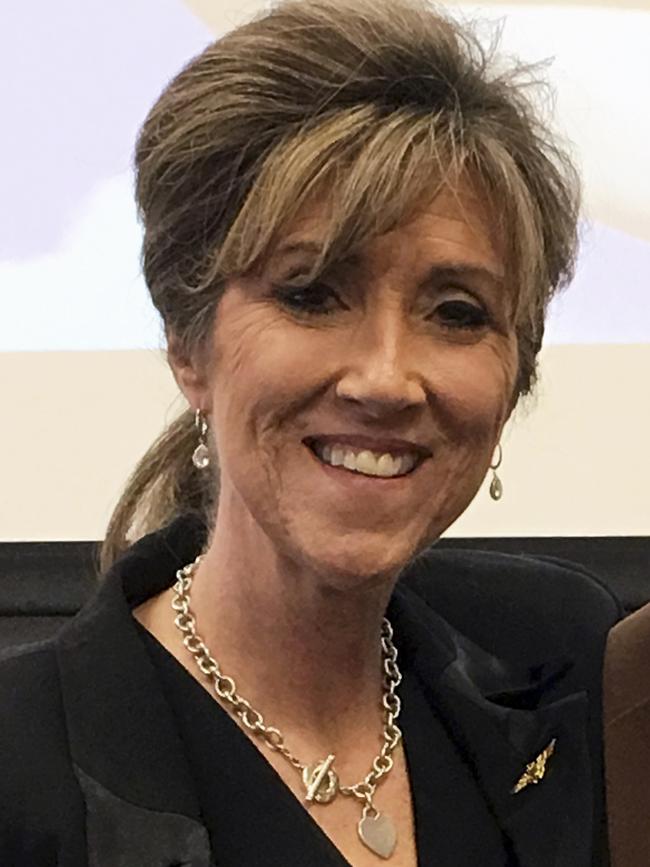Seatbelt could not save plane victim Jennifer Riordan
Pilot Tammy Jo Shults and passengers who tried to save Jennifer Riordan hailed as heroes after she was sucked out plane window.

Just 23 minutes after takeoff and 32,500 feet over rural Pennsylvania, the calm routine of a flight from New York to Dallas was shattered by the boom of an exploding engine, a whoosh of air and the sight of a woman being sucked headfirst out of a broken window.
As oxygen masks were released from above and the plane tipped forward, a man in a cowboy hat leapt to his feet: Tim McGinty, a Texas estate agent. He ran from his seat a few rows forward and grabbed hold of the woman and tried to pull her back inside. Jennifer Riordan, 43, a banking executive and mother of two, was already half way out of the plane despite wearing a seat belt.
“I couldn’t pull her in,” Mr McGinty told reporters. A firefighter named Andrew Needum arrived beside him and together they hauled her back.

A few rows behind, a retired nurse named Peggy Phillips heard the shout for someone with medical training to help. She pulled off her oxygen mask and hurried forward, trying to resuscitate Ms Riordan in the aisle, but it was clear she had suffered grievous injuries.
“If you can possibly imagine going through the window of an aeroplane at about 600 miles an hour, and hitting either the fuselage or the wing with your body, with your face, then I think I can probably tell you that there was significant trauma,” Ms Phillips said.
Fire warnings flashed in the cockpit, and Captain Tammy Jo Shults informed air traffic control and began an immediate descent.
Robert Sumwalt, chairman of the National Transportation Safety Board, said later that the fire warnings were false, but may have been triggered when a fan blade of the Boeing 737’s left engine sheared off. The ensuing explosion blew off part of the casing of the engine and shrapnel struck the plane, smashing the window.
Philadelphia’s medical examiner has confirmed that Ms Riordan died of blunt impact trauma to her head, neck and torso.

Captain Shults, 56, who was one of the first female fighter pilots in the US navy and the first woman to fly an F/A-18 Hornet, responded with almost preternatural calm, bringing the plane down for an emergency landing in Philadelphia. “Have them roll the trucks,” she said. “We are still going to need to slow down a bit. Could you have medical meet us there on the runway as well, we have got injured passengers.”

“OK. Injured passengers,” said an air traffic controller. “And is your aircraft physically on fire?”
“No,” she replied. “But part of it is missing. There is a hole and someone went out.”
Captain Shults’s descent was compared to Chesley Sullenberger’s landing on the Hudson in 2009, but she brought the plane in faster, without fully extending the flaps, apparently fearful the aircraft would unstable if she slowed too much before landing.
Mr Sumwalt said an initial inspection of the engine had shown signs of metal fatigue. He said 144 passengers and five crew were on board the plane. There were seven other reported injuries.
Ms Riordan’s relatives paid tribute to her yesterday, calling her “the bedrock of our family” and a vibrant, passionate personality who made “an impact on everything and everyone she touched”.
The Times





